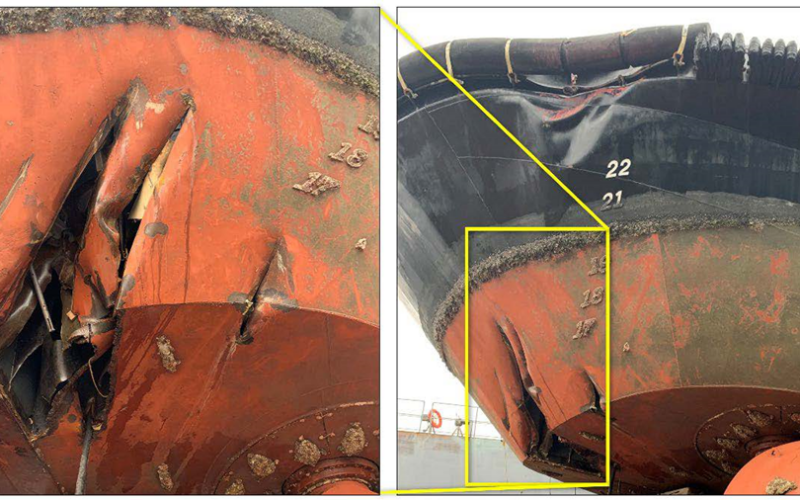(WASHINGTON) — A tugboat maneuvering near a transiting tanker in the Corpus Christi Ship Channel was drawn in toward the tanker, leading to a collision, the National Transportation Safety Board (NTSB) said Tuesday.
The tugboat Mark E. Kuebler and the tanker Nisalah collided in the channel near Ingleside, Texas, on Jan. 22, 2023. The tugboat’s hull was breached by the tanker’s propeller, which was also damaged in the collision. The collision resulted in nearly $7 million in damage. There were no injuries.
“A small vessel operating near a larger vessel must maintain a safe operating distance or have sufficient reserve power to counteract the hydrodynamic forces to avoid being pulled into the other vessel and risking collision,” the report said. “If a small vessel must operate near a larger vessel – such as a tugboat conducting harbor-assist operations – the operator of the smaller vessel should be aware of the hazards caused by hydrodynamic forces and, if necessary, maintain a safe distance until the larger vessel slows and the hydrodynamic forces are reduced.”

Five tugboats were dispatched for harbor-assist operations for Nisalah’s arrival, with Mark E. Kuebler assigned the starboard quarter position. As the tanker was moving through the channel at nearly 10 knots, the mate of the tugboat decided to turn the tugboat around and transit backward to get in the tug’s assigned position.
During the turn, the tugboat fell back toward the stern of the tanker. The tugboat mate increased the speed and power to try to regain position, but was drawn in toward the tanker by hydrodynamic forces and the two collided. The NTSB found the tugboat had insufficient reserve power to counteract the hydrodynamic forces due to the transit speed of the vessels.
As the tugboat attempted to move into position, its speed increased to 11.6 knots – just 1.4 knots less than its maximum-rated ahead speed. Higher speed reduces the amount of reserve propulsion power available to the operator.
“Owners and operators of z-drive tugboats that perform harbor-assist operations should set speed limits for advanced maneuvers such as stern-first approaches,” the report said. “These limits may vary for different classes of tugboats based on design. Tugboat operators should communicate these limits to ship masters or pilots in command of the vessels that they are assisting before engaging in these maneuvers.”
Following the collision, the tugboat’s operating company instituted a policy limiting stern-first landings of tugboats on assisted vessels to speeds of 7 knots or less.
Click here to read the complete report.
– National Transportation Safety Board

